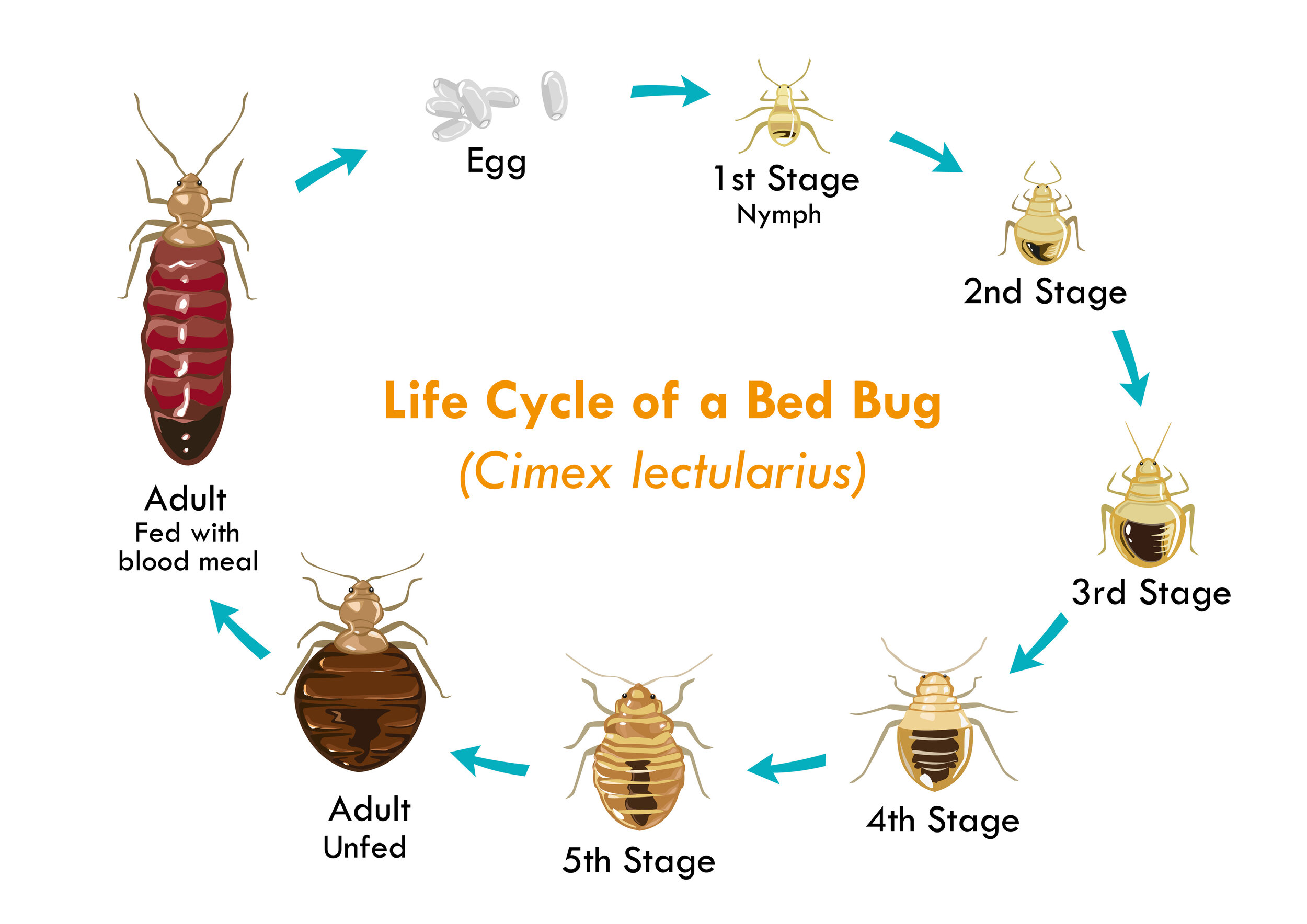Comprehensive A1 Bed Bug Extermination in Houston Location
Comprehensive A1 Bed Bug Extermination in Houston Location
Blog Article
Recognizing the Lifecycle of Insects for Targeted Control Methods
Comprehending the lifecycle of bugs is an essential aspect of efficient parasite monitoring methods. With a much deeper understanding of exactly how bugs prosper and progress, tailored control strategies can be designed to address details factors in their lifecycle, inevitably leading to even more successful pest management end results.
Relevance of Recognizing Insect Lifecycle
Understanding the lifecycle of insects is necessary for developing effective and targeted control strategies in parasite administration. By comprehending the various stages a pest goes through from egg to grownup, parasite control experts can determine weak spots in the lifecycle where treatment can be most successful. For instance, knowing when larvae are most energetic can assist determine the optimum timing for applying larvicides. Furthermore, recognizing the lifespan of an insect types can assist in predicting population development patterns and potential infestation dangers.
In addition, identifying the particular ecological problems essential for each and every phase of the parasite's lifecycle can assist decisions on habitat modification or exemption methods to lower and interfere with the lifecycle bug populations. This knowledge makes it possible for pest monitoring experts to execute proactive actions instead than relying solely on responsive treatments, resulting in more lasting and lasting parasite control options. Ultimately, a thorough understanding of pest lifecycles empowers pest control practitioners to tailor their approaches efficiently, decreasing environmental impacts and making best use of control outcomes.
Secret Phases in Pest Development
To effectively apply targeted control methods in bug management, a critical element lies in thoroughly recognizing and recognizing the essential stages in parasite development. Insect advancement commonly includes a number of vital stages that are important for their lifecycle and monitoring. The initial stage is the egg stage, where bugs lay eggs that later on hatch right into larvae. Larvae then advance right into pupae, a phase where they go through transformation prior to emerging as grown-up parasites. Comprehending these phases is vital as it aids in pinpointing at risk factors in the lifecycle where control procedures can be most effective.

Susceptabilities in Bug Lifecycle
Throughout the various phases of a pest's lifecycle, distinctive vulnerabilities arise that can be strategically targeted for reliable control steps. One vital vulnerability hinges on the egg stage, where parasites are commonly more at risk to certain pesticides or biological control agents due to their soft external shell, making them much easier targets for treatment. Furthermore, the larval or nymph phase provides vulnerabilities as parasites undertake rapid growth and growth, needing high energy usage that can be exploited by interrupting their food resources or introducing development preventions. Pupal stages, identified by stability and makeover, provide a window for targeted control with physical barriers or details treatments that impede effective emergence. Ultimately, grown-up pests, while much more resistant because of their reproductive capacity, can still be prone during breeding or egg-laying tasks, which can be disrupted via pheromone catches or sanitation techniques. Recognizing these vulnerabilities in the insect lifecycle is essential for developing accurate and effective control approaches that efficiently handle bug populaces while reducing environmental impact.
Carrying Out Targeted Control Procedures

Applying targeted control procedures usually includes a multi-faceted approach. This may include environment adjustment to make the atmosphere less hospitable to parasites, such as getting rid of standing water for insect control or sealing entry points for rodents. Furthermore, biological control techniques can be utilized, where natural killers or pathogens are presented to keep insect populations in check.
Chemical control, such as the careful application of chemicals, is an additional typical strategy. It is read the full info here essential to utilize these substances carefully to reduce ecological effect and potential injury to non-target species - A1 Bed bug exterminator houston LLC. Integrated Pest Monitoring (IPM) techniques that integrate numerous control procedures in a coordinated and lasting manner are typically the most efficient in achieving long-lasting parasite management objectives. By implementing targeted control actions based on a thorough understanding of insect lifecycles, parasite populations can be efficiently managed while decreasing risks to human health and wellness and the atmosphere.
Improved Parasite Management Practices

Additionally, the unification of biological control agents, such as all-natural killers or pathogens of bugs, can help decrease dependence on chemical pesticides and advertise a more balanced environment. Implementing physical barriers and traps can likewise become part of enhanced insect administration techniques, providing non-toxic and targeted options for parasite control. Additionally, using pheromones and various other semiochemicals can interfere with pest breeding patterns and interaction, resulting in decreased bug populaces with time.
Conclusion
To conclude, comprehending the lifecycle of bugs is crucial for effective insect administration methods. By recognizing vital phases in pest development and vulnerabilities in their lifecycle, targeted control procedures can be carried out to lessen parasite populaces. Boosted parasite management practices can help minimize the reliance on broad-spectrum pesticides and promote more lasting and eco-friendly insect control techniques. This understanding plays an important role in maintaining healthy communities and agricultural YOURURL.com productivity.
Comprehending the lifecycle of pests is essential for creating reliable and targeted control methods in insect management. By understanding the numerous stages an insect goes through from egg to grownup, parasite control experts can identify at risk factors in the lifecycle where intervention can be most successful. Inevitably, a detailed understanding of pest lifecycles encourages parasite control practitioners to tailor their strategies successfully, making best use of and lessening ecological effects control end results.
By executing targeted control actions based on an extensive understanding of parasite lifecycles, insect populaces can be efficiently regulated while reducing threats to human health and the atmosphere.
By recognizing essential phases in pest growth and vulnerabilities in their lifecycle, targeted control actions can be executed to decrease pest populations.
Report this page